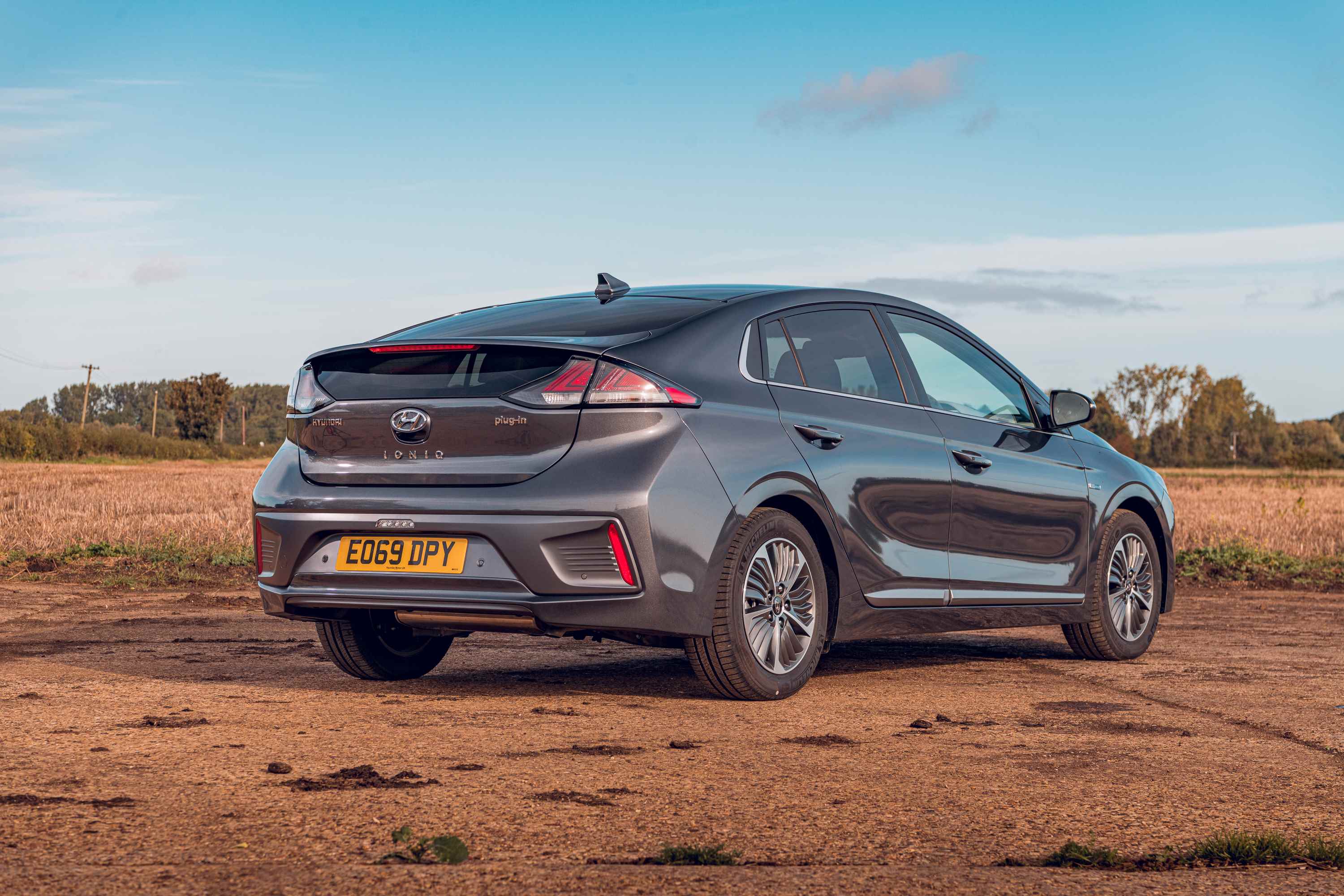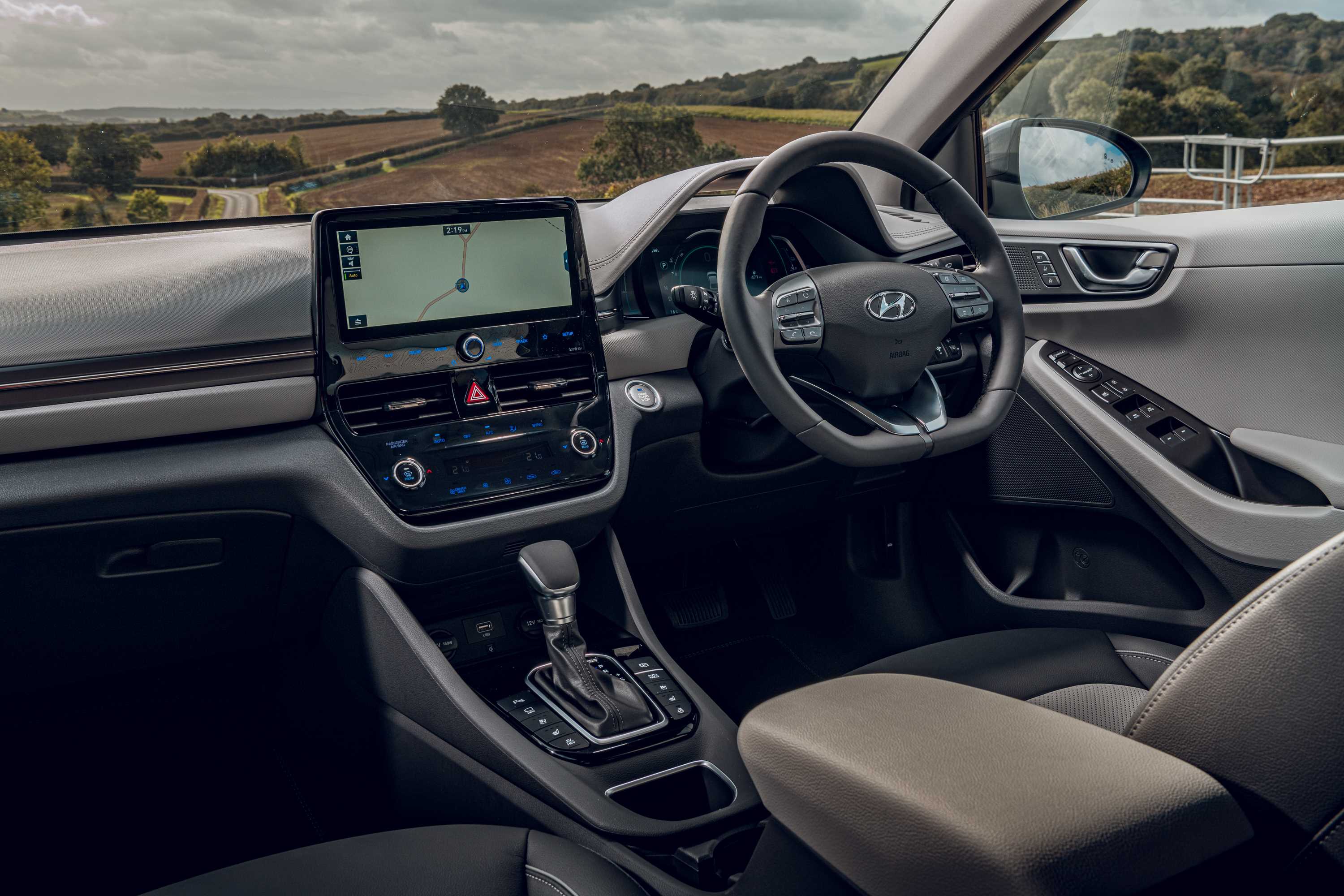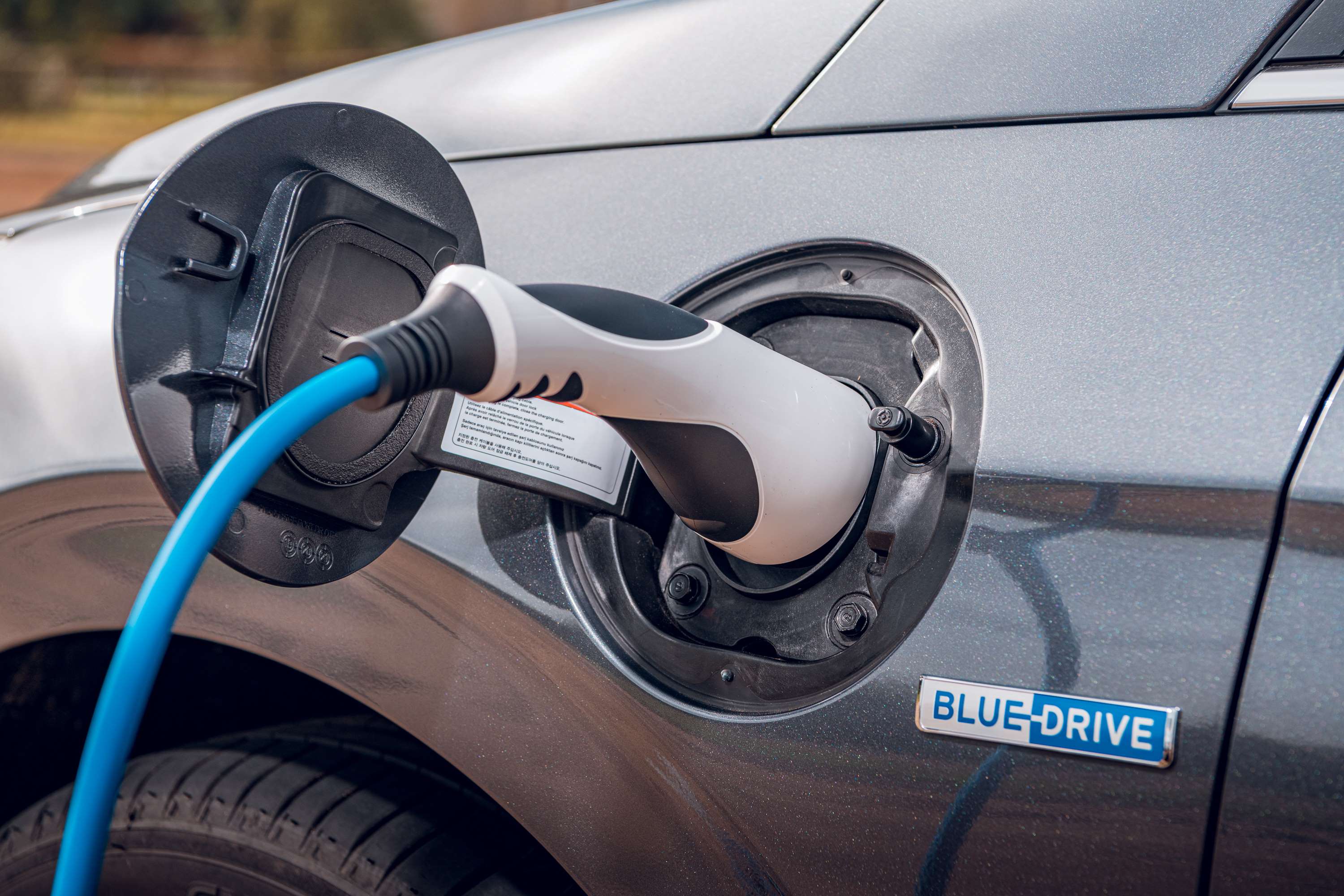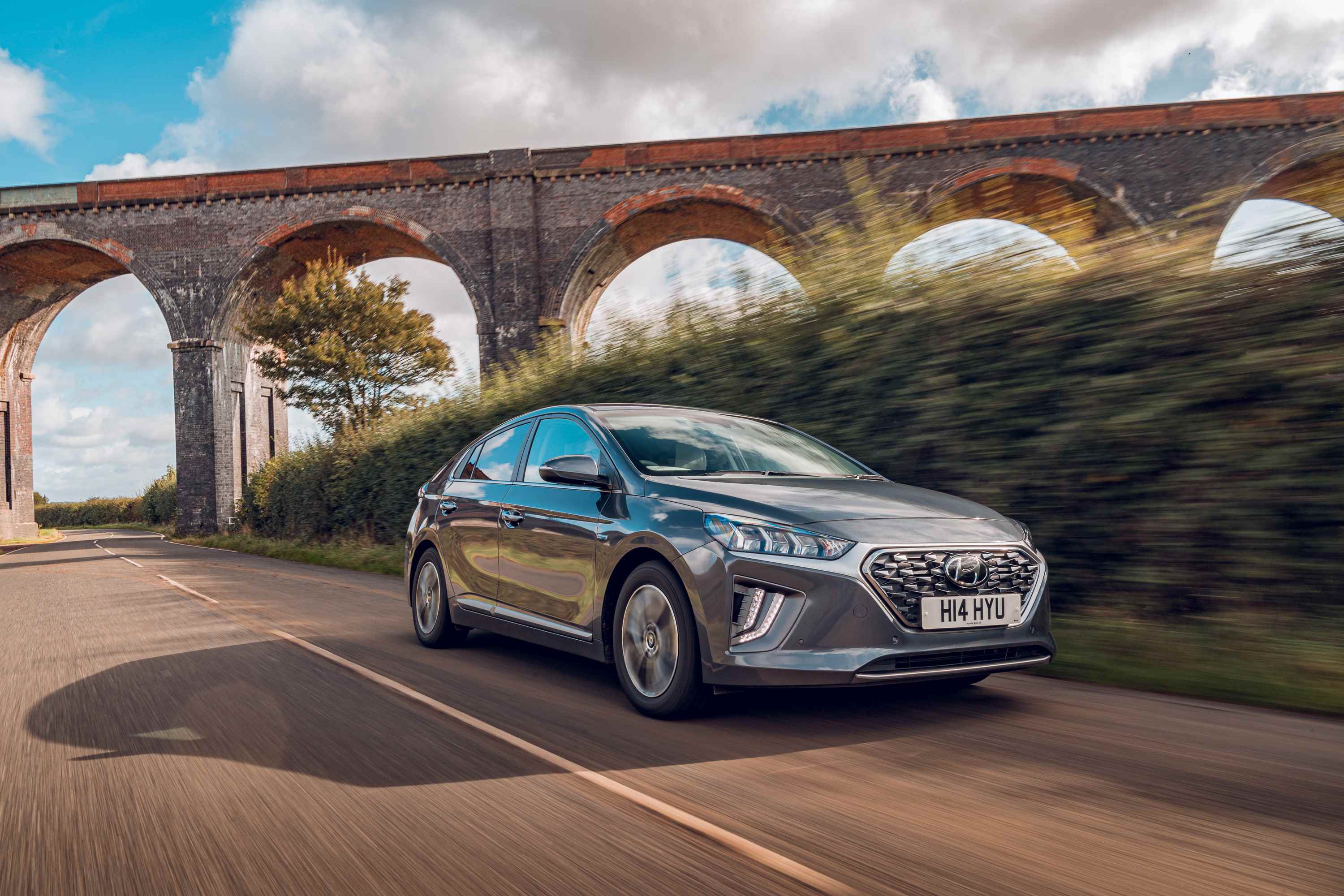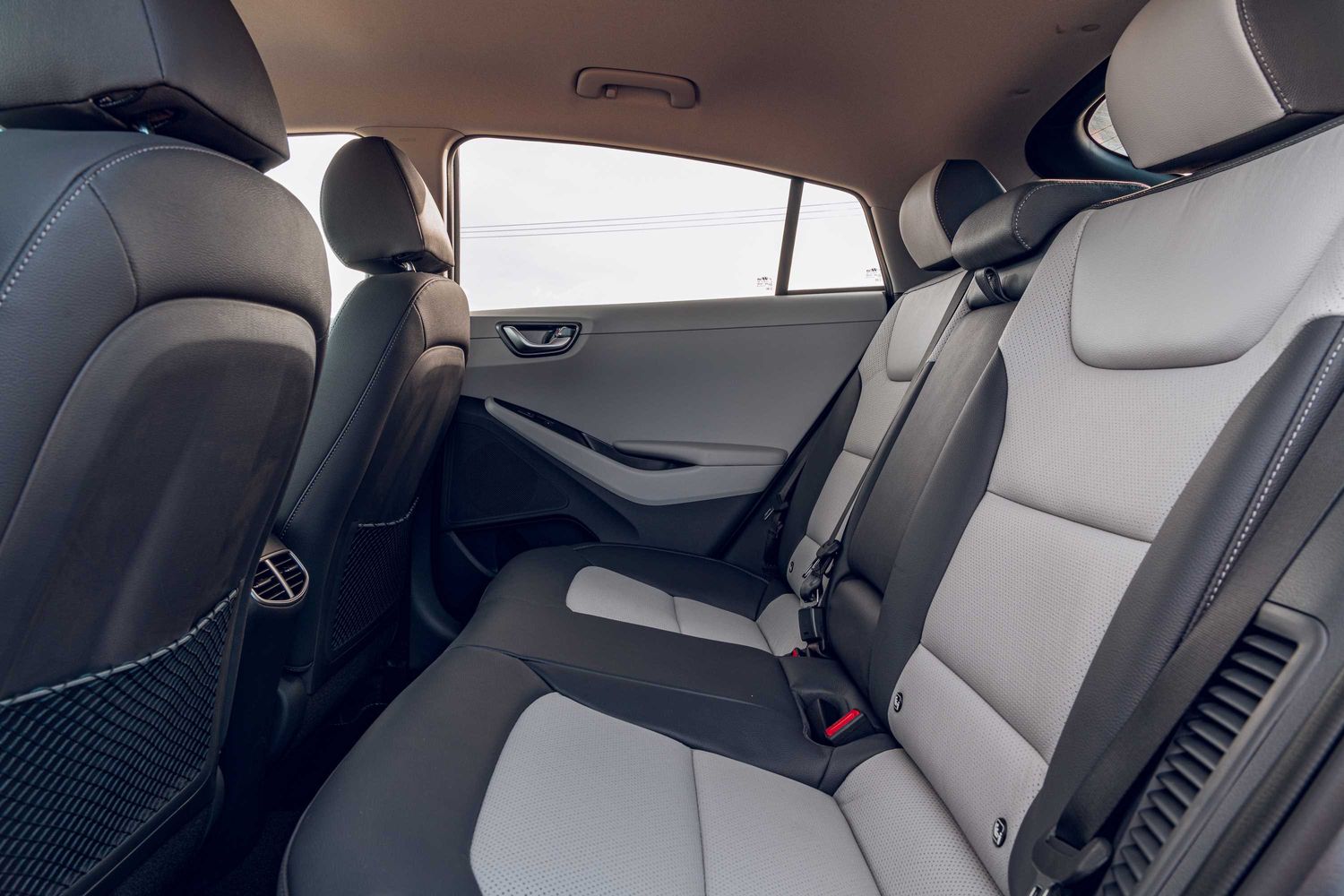Practicality and Boot Space
The Ioniq is roughly the same size as a VW Golf or Nissan Leaf, and also offers similar family-appropriate practicality. You’ll get a couple of average-sized adults in the back of the Ioniq very comfortably, although taller passengers may find their heads brushing the ceiling.
More likely to be an issue is the shallow boot, since the sloping boot cuts into available storage space. For all that, the boot floor is actually quite long and wide, so you’ve got loads of space to store stuff as long as you don’t need to get tall or really bulky items in there regularly. The seats fold down easily, too, and offer an extended loadbay for when you have to slide in that Christmas tree or Ikea flat pack extravaganza. If boot space and practicality is a priority, check out the Kia Ceed Sportswagon PHEV, or larger alternatives such as the Skoda Superb iV offers far better space albeit at a price.
There’s plenty of space for the driver and front passenger, with heated seats, and comfy – if fairly flat – seats with adjustable lumbar support. Go for Premium SE and you even get heated seats in the back, as well as heated and ventilated front seats, electric seat adjustment for the driver and leather upholstery. There’s loads of cubbies up front to neatly store your phone out of sight, and keep all your other gubbins out of the way.
Technology
The Ioniq’s tech focus is all on the 10.25-inch touchscreen set into the dash. It’s a fantastic system, through which you control everything from the car’s driving modes and settings to the navigation, audio and charging. It’s a very modern system that has nav as standard in both Premium and Premium SE, and will allow you to search for charge points as well as car parks and other points of interest. You can even set the nav map to a 3D mode so that you can see the buildings you’re driving past.
There’s digital radio, Bluetooth handsfree and audio streaming, or you can plug your phone in via the USB inputs and play your music via the car’s system, or use Apple CarPlay or Android Auto to fully integrate all of your phone’s features into the car’s screen. There’s even wireless phone charging in both Ioniq PHEV trims, making this the most comprehensive standard infotainment system in the class.
While we’re on technology, the Hyundai’s phone app doesn’t just allow remote control of the charging. Provided the car is plugged in, you can use the app to set the cabin to pre-warm or pre-cool ready for when you plan to set off.
Safety
The Ioniq did really well in Euro NCAP’s crash tests, getting a full five star rating and an impressive 91% score for adult protection. Those tests were carried out in 2016, though, and the tests are stricter now. Even so, the Ioniq’s standard reversing sensors and parking camera, autonomous emergency braking, adaptive cruise control with stop-and-go function, lane-keep assist and seven airbags including driver’s knee airbag means it would likely do well even today. The only black marks are that blind spot warning and rear cross traffic alert (which tells you if there’s a car approaching while you’re reversing out a parking space) are only included on the top-spec Premium SE. There’s also no space saver spare tyre since the batteries take up the available space beneath the boot floor.











